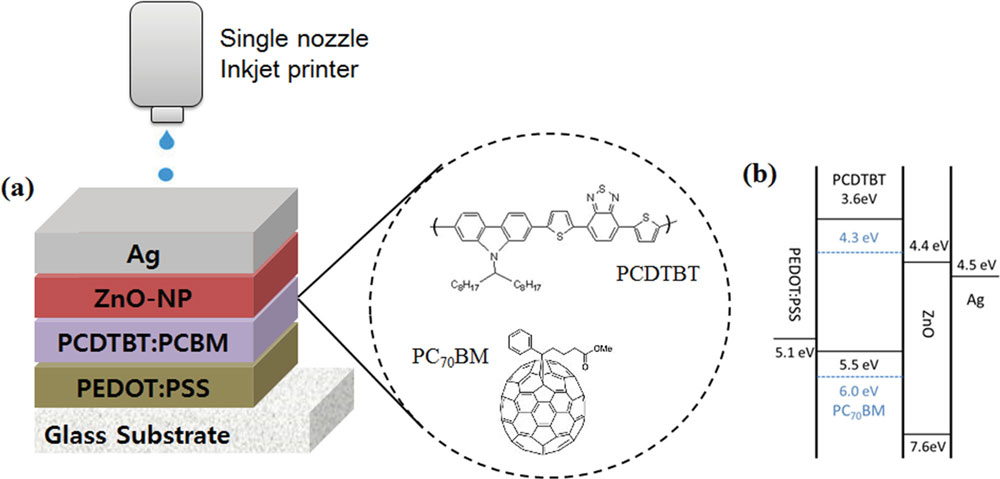Welcome to DU!
The truly grassroots left-of-center political community where regular people, not algorithms, drive the discussions and set the standards.
Join the community:
Create a free account
Support DU (and get rid of ads!):
Become a Star Member
Latest Breaking News
General Discussion
The DU Lounge
All Forums
Issue Forums
Culture Forums
Alliance Forums
Region Forums
Support Forums
Help & Search
Environment & Energy
Related: About this forumWeird question: would photovoltaic paint work?
There are already conductive paints. Could they create a coating with photovoltaic qualities, that's cheap enough to use and safe enough to handle without having to wear a nerve gas suit? Instead of buying solar panels for...oh, say an African village or a small American town fifty miles from the nearest power line...you could paint conductive stripes on the south-facing walls of buildings, then overlay them with this PV coating to make a solar panel on the wall you've already got.
InfoView thread info, including edit history
TrashPut this thread in your Trash Can (My DU » Trash Can)
BookmarkAdd this thread to your Bookmarks (My DU » Bookmarks)
4 replies, 1293 views
ShareGet links to this post and/or share on social media
AlertAlert this post for a rule violation
PowersThere are no powers you can use on this post
EditCannot edit other people's posts
ReplyReply to this post
EditCannot edit other people's posts
Rec (0)
ReplyReply to this post
4 replies
 = new reply since forum marked as read
Highlight:
NoneDon't highlight anything
5 newestHighlight 5 most recent replies
= new reply since forum marked as read
Highlight:
NoneDon't highlight anything
5 newestHighlight 5 most recent replies
Weird question: would photovoltaic paint work? (Original Post)
jmowreader
Nov 2014
OP
nykym
(3,063 posts)1. It looks like it is being worked on.
NYC_SKP
(68,644 posts)2. Yes, without question. nt
OKIsItJustMe
(19,937 posts)3. Heck, you can do photo-electric ink
https://en.wikipedia.org/wiki/Inkjet_solar_cell
http://www.nanowerk.com/spotlight/spotid=36042.php
http://www.nanowerk.com/spotlight/spotid=36042.php
[font face=Serif]Posted: Jun 16, 2014
[font size=5]Complete solar cells printed by inkjet[/font]
[font size=3](Nanowerk Spotlight) Organic photovoltaic (OPV) technologies have the potential to become a thin-film alternative to inorganic silicon photovoltaics due to their intrinsic potential for low-cost print processing from solution – high-speed and at low temperature. Organic solar cells can be integrated into building facades and windows because they are optically translucent and can be manufactured on large areas at high throughput.
"Despite impressive progress over the past decade, OPVs are still some way behind other thin-film technologies harvesting solar energy because of low efficiencies and short lifetimes," Sungjune Jung, an Assistant Professor in the Department of Creative IT Engineering at Pohang University of Science and Technology (POSTECH) in South Korea, tells Nanowerk. "To date, no route is available for monolithically integrating solar cells into a system in which other components such as transistors, sensors, or displays are already fabricated."
Jung is first author of a recent paper in Advanced Energy Materials ("All-Inkjet-Printed, All-Air-Processed Solar Cells" where he and and international team of researchers report for the first time the fabrication and measurement of all-inkjet-printed, all-air-processed organic solar cells.[/font]
where he and and international team of researchers report for the first time the fabrication and measurement of all-inkjet-printed, all-air-processed organic solar cells.[/font]
…[/font][/font]
[font size=5]Complete solar cells printed by inkjet[/font]
[font size=3](Nanowerk Spotlight) Organic photovoltaic (OPV) technologies have the potential to become a thin-film alternative to inorganic silicon photovoltaics due to their intrinsic potential for low-cost print processing from solution – high-speed and at low temperature. Organic solar cells can be integrated into building facades and windows because they are optically translucent and can be manufactured on large areas at high throughput.
"Despite impressive progress over the past decade, OPVs are still some way behind other thin-film technologies harvesting solar energy because of low efficiencies and short lifetimes," Sungjune Jung, an Assistant Professor in the Department of Creative IT Engineering at Pohang University of Science and Technology (POSTECH) in South Korea, tells Nanowerk. "To date, no route is available for monolithically integrating solar cells into a system in which other components such as transistors, sensors, or displays are already fabricated."
Jung is first author of a recent paper in Advanced Energy Materials ("All-Inkjet-Printed, All-Air-Processed Solar Cells"
a) Device structure of an inkjet-printed solar cell and b) energy level diagram of its components. All the four layers are printed using a single nozzle inkjet printer and all the fabrication processes including printing, annealing and measuring have been performed in air at room temperature. (Reprinted with permission by Wiley-VCH Verlag)
…[/font][/font]
dumbcat
(2,120 posts)4. Sure, why not?
People are working on it. I think something like that has already been demonstrated.
Commercialization is another issue.
